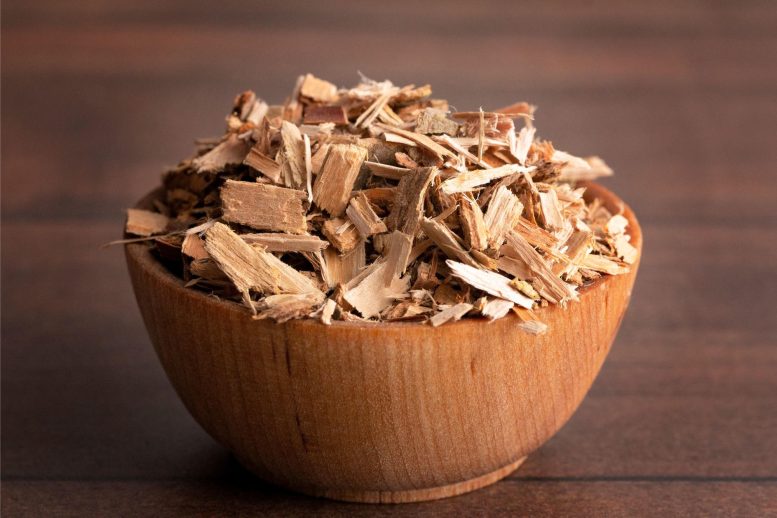
Researchers in Finland have found that willow bark extract has potent antiviral properties against various viruses, including COVID-19 and enteroviruses, offering a promising basis for developing new antiviral treatments.
Willow bark, already the origin of aspirin, could now be the key to a vital new antiviral medication.
From seasonal colds to stomach bugs, it’s clear that viral infections are unwelcome and epidemics can have catastrophic impacts. To address future outbreaks, the development of safe and sustainable antiviral treatments is crucial. In Finland, researchers have recently discovered that willow bark extract, a plant known for yielding various medicinal compounds including the basis for contemporary aspirin, exhibits a wide-ranging antiviral effect in laboratory cell studies.
The extract worked both on enveloped coronaviruses, which cause colds as well as COVID-19, and non-enveloped enteroviruses, which cause infections such as flu and meningitis. There are no clinically approved drugs that work against enteroviruses directly, so this extract could be a future game-changer.
“We need broadly acting and efficient tools to combat the virus load in our everyday life,” said Prof Varpu Marjomäki of the University of Jyväskylä, senior author of the study in Frontiers in Microbiology. “Vaccinations are important, but they cannot deal with many of the newly emerging serotypes early enough to be effective on their own.”
Medicines from nature
The scientists had previously tested willow bark extract on enteroviruses, and found it was highly successful: in this new study, they expanded the remit of their research to look at additional kinds of virus and to try to understand the mechanism of the extract’s action.
To make the extract, they harvested commercially grown willow branches. The bark was cut into pieces, frozen, ground, and then extracted using hot water. This produced the extract samples which the scientists tested against enteroviruses — strains of Coxsackievirus A and B — and coronaviruses — a seasonal coronavirus and COVID-19.
The scientists used a cytopathic effect inhibition assay to see how long the extract took to act on infected cells and how well it inhibited viral activity. The extract did not harm the cells themselves and efficiently protected cells from infection. A binding assay carried out on the COVID-19 samples further showed that although this virus could enter cells even if treated with the extract, it couldn’t reproduce once it was inside.
Catching viruses out
The authors had previously found that the extract was effective against enteroviruses, which meant it could act against two differently structured types of virus, enveloped and non-enveloped. However, the mechanism of action appeared to be very different, because treated enteroviruses couldn’t enter cells.
The scientists then experimented with the timing of the addition of the extract to see if the extract attacked particular stages of the virus life cycle. They found that the extract seemed to act on the surface of the virus, rather than any given stage of its replication cycle.
They also examined the treated virus under the microscope to understand the effects of the extract better. Both viruses clustered together instead of spreading out, but the enveloped coronaviruses appeared to have been broken down, while the non-enveloped enteroviruses appeared to have been locked down, prevented from releasing their genome and reproducing.
“The extracts acted through distinct mechanisms against different viruses,” said Marjomäki. “But the extracts were equally effective in inhibiting the enveloped as well as non-enveloped viruses.”
Future treatment for colds and flu?
The authors also tested existing medical compounds derived from willow bark, as well as commercially prepared salixin extract and salixin powder. Of these, only the salixin extract showed antiviral activity, suggesting that the success of the scientists’ willow bark extract could result from the interactions of different bioactive compounds.
The scientists fractionated their extract to understand its chemical composition, but didn’t get clear answers as to which of the many effective compounds might be primarily responsible for the antiviral effect. Further research will be needed to understand the bioactive compounds involved, their chemical structure, and how they work, potentially leading to revolutionary new antiviral treatments.
“We are presently continuing fractionations and bioactive molecule identification from willow bark extracts,” said Marjomäki. “This will give us a number of identified pure molecules which we can study in further detail. Also, we will study a larger number of viruses with purified components. Purified components will give us better opportunities to study their mechanisms of action.”
Reference: “Willow (Salix spp.) bark hot water extracts inhibit both enveloped and non-enveloped viruses: study on its anti-coronavirus and anti-enterovirus activities” by Dhanik Reshamwala, Sailee Shroff, Jaana Liimatainen, Jenni Tienaho, Mira Laajala, Petri Kilpeläinen, Anneli Viherä-Aarnio, Maarit Karonen, Tuula Jyske and Varpu Marjomäki, 18 September 2023, Frontiers in Microbiology.
DOI: 10.3389/fmicb.2023.1249794
The study was funded by the Academy of Finland and the Jane & Aatos Erkko Foundation.









In my early 20’s I was possessed with a hunger to return to a more natural environment, including the sources of any natural medicines I ingested. I travelled with a naturopathic publication written by Bradford Angier, called “A Field Guide to Medicinal Wild Plants”. I stayed for a time along BC’s Adam River, and used Red Willow bark, and even smoked some dried bark in a corncob pipe, which mollified aching muscles brought on from doing a lot of survival chores solely by hand. I was told, however, that the most effective layer was that beneath the outer bark and atop the center wood of the branches.
My life has been enriched by using plant based medicines, and I credit the eucalyptus plant for improving my breathing after a diagnosis of COPD in my late 50’s, the symptoms of which disappeared when I substituted eucalyptus oil for the $170/month bromine concoction in a puffer sold by a large pharmaceutical, which gave some improvement which unfortunately never helped my lungs improve beyond the need for more of the ‘factory’ medicine! The natural oil from Eucalyptus made it unnecessary to take the oil’s vapours continually, but only when a trigger such as diesel fumes, tobacco smoke, or other obnoxious particulate(s) entered or compromised my airways. Now in my 70’s, I feel I own a vastly improved state of health because of Eucalyptus Oil, and discovering it was a true blessing from big Mama Nature, and every time I ride my Bike or jog I say a silent ‘thank-you’ to the wonders inhabiting the world’s flora and to those who continue to make us aware of Nature’s bounty despite the fact that many of the world’s large pharmaceutical corporations are continually trying to influence the government Licensing Bodies to force sellers of non-pharmaceutical medications to license everything that they sell, which makes the natural substances more expensive than many can afford! I am not including any programs of usage of any natural medication, but can only advise that Eucalyptus is a strong agent, and taking too much at a sitting may exacerbate one’s breathing difficulties, so a new user should contact their Health provider(s), and/or a trained herbalist, for advice for the usage of this natural medication.